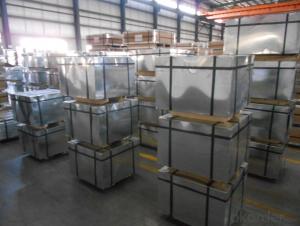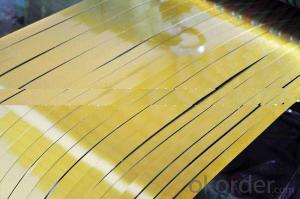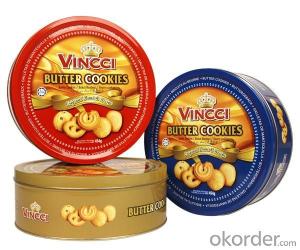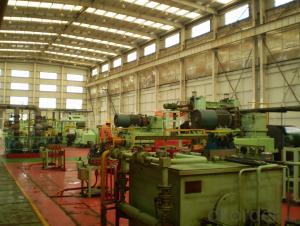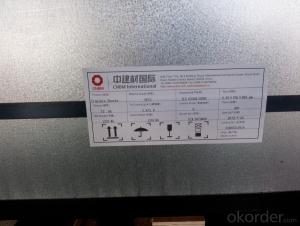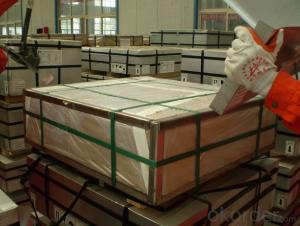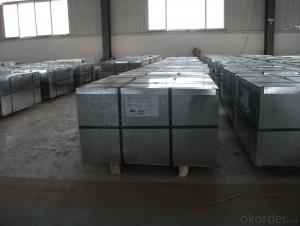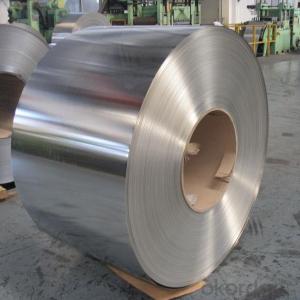Prime or Secondary Tinplate
- Loading Port:
- China Main Port
- Payment Terms:
- TT OR LC
- Min Order Qty:
- -
- Supply Capability:
- -
OKorder Service Pledge
OKorder Financial Service
You Might Also Like
Our Tinplates Specification:
Standard: ISO 11949 -1995, GB/T2520-2000,JIS G3303,ASTM A623, BS EN 10202
Material: MR,SPCC
Thickness:0.15mm - 0.50mm
Width: 600mm -1150mm
Temper: T1-T5; DR8 - DR10;
Annealing: BA & CA
Passivation:311
Oil: DOS
Surface: Finish,bright,stone,matte,silver
Packing:
1、For sheets: plastic or waterproof paper, metallic cover and angles, steel strips,wooden pallet.
2、For Coils: plastic or waterproof paper,plastic protect plate,steel strips.
Coil Inner Diameter: 508mm
Weight: 6-10 tons/coil
Application: widely used in every kinds of packing cans,such as tea packaging cans, painting packaging cans, chemical packaging cans and dry food packaging cans; and also mechanical parts
Both Prime and Second Quality Are Available!!!
- Q: How does tinplate contribute to the safety and integrity of packaged products?
- Tinplate contributes to the safety and integrity of packaged products by providing a protective barrier against external factors such as moisture, light, and oxygen. This helps to prevent the deterioration and contamination of the packaged goods, ensuring their quality and extending their shelf life. Additionally, tinplate is a durable and sturdy material that offers excellent resistance to impact and mechanical damage, safeguarding the contents during transportation and handling.
- Q: How does tinplate contribute to the functionality of household goods?
- Tinplate contributes to the functionality of household goods by providing a durable and protective coating that prevents corrosion and preserves the quality of the product. Its ability to resist moisture and maintain food freshness makes it ideal for packaging food items such as canned goods. Additionally, tinplate's versatility allows it to be easily formed into different shapes, enabling the creation of various household items like containers, kitchen utensils, and decorative pieces.
- Q: How is tinplate coated for toys and games?
- Tinplate is commonly coated for toys and games using a process called electroplating, where a thin layer of tin is applied to the surface of the metal. This coating provides a protective barrier against corrosion and enhances the aesthetics of the toys and games.
- Q: What is the average lifespan of tinplate products?
- The average lifespan of tinplate products can vary depending on several factors, such as the quality of the tinplate used, the conditions in which the products are stored and used, and how well they are maintained. Generally, tinplate products can last for several years to a decade or more if properly cared for.
- Q: Advantages and disadvantages of tinplate packaging
- Because of these properties, so can provide a besides the heat, completely isolated from the closed system of environmental factors, avoid color food because of light, oxygen, moisture and deterioration, nor because of aroma through and become weak or affected by environmental pollution through the smell and taste, stability is better than that of other packaging materials of food storage. Vitamin C save the highest rate, nutrient retention is the best. International environmental management standards will be implemented soon based on ISO-14000, has the advantages of low pollution, tin recycling, resource characteristics, in the future packaging applications, will have a broader space for development.
- Q: What's the advantage of metal containers in packing tea?
- Aluminum cans are exquisite. Well done! That's a relatively high cost.3: tin cans cost even higher. Tin can hold tea for hundreds of years. Firm, able to sculpt, and end as a work of art.
- Q: Can tinplate be used for coinage?
- No, tinplate cannot be used for coinage as it is not a durable or suitable material for minting coins.
- Q: What industries use tinplate packaging?
- The industries that commonly use tinplate packaging include food and beverage, cosmetics, pharmaceuticals, and household products.
- Q: What are the safety regulations for using tinplate in food packaging?
- The safety regulations for using tinplate in food packaging vary depending on the country. However, generally, tinplate used for food packaging should comply with regulations set by food safety authorities such as the FDA in the United States or the European Food Safety Authority in the European Union. These regulations typically cover aspects such as the use of food-grade coatings, absence of harmful substances, and compliance with specific testing and labeling requirements. It is important for manufacturers to ensure that tinplate used in food packaging meets these safety regulations to ensure the protection of consumers' health.
- Q: What are the main applications of tinplate in the household goods industry?
- Tinplate is commonly used in the household goods industry for various applications such as food and beverage packaging, storage containers, kitchenware, and decorative items. Its corrosion resistance, durability, and ability to seal in freshness make it an ideal material for cans, jars, and tins. Additionally, its versatility allows for the creation of aesthetically pleasing and functional household items like trays, buckets, and utensils.
Send your message to us
Prime or Secondary Tinplate
- Loading Port:
- China Main Port
- Payment Terms:
- TT OR LC
- Min Order Qty:
- -
- Supply Capability:
- -
OKorder Service Pledge
OKorder Financial Service
Similar products
Hot products
Hot Searches
Related keywords
